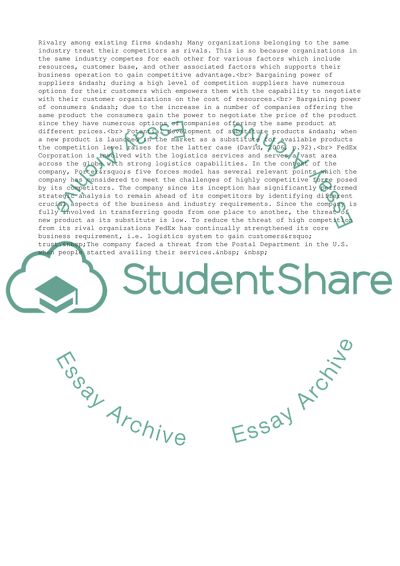Cite this document
(FedEx Corporation - Structural Transformation through E-Business Case Study, n.d.)
FedEx Corporation - Structural Transformation through E-Business Case Study. Retrieved from https://studentshare.org/business/1564843-a-critical-analysis-and-evaluation-of-strategy-development-in-the-global-transportation-and-logistics-industry
FedEx Corporation - Structural Transformation through E-Business Case Study. Retrieved from https://studentshare.org/business/1564843-a-critical-analysis-and-evaluation-of-strategy-development-in-the-global-transportation-and-logistics-industry
(FedEx Corporation - Structural Transformation through E-Business Case Study)
FedEx Corporation - Structural Transformation through E-Business Case Study. https://studentshare.org/business/1564843-a-critical-analysis-and-evaluation-of-strategy-development-in-the-global-transportation-and-logistics-industry.
FedEx Corporation - Structural Transformation through E-Business Case Study. https://studentshare.org/business/1564843-a-critical-analysis-and-evaluation-of-strategy-development-in-the-global-transportation-and-logistics-industry.
“FedEx Corporation - Structural Transformation through E-Business Case Study”, n.d. https://studentshare.org/business/1564843-a-critical-analysis-and-evaluation-of-strategy-development-in-the-global-transportation-and-logistics-industry.


